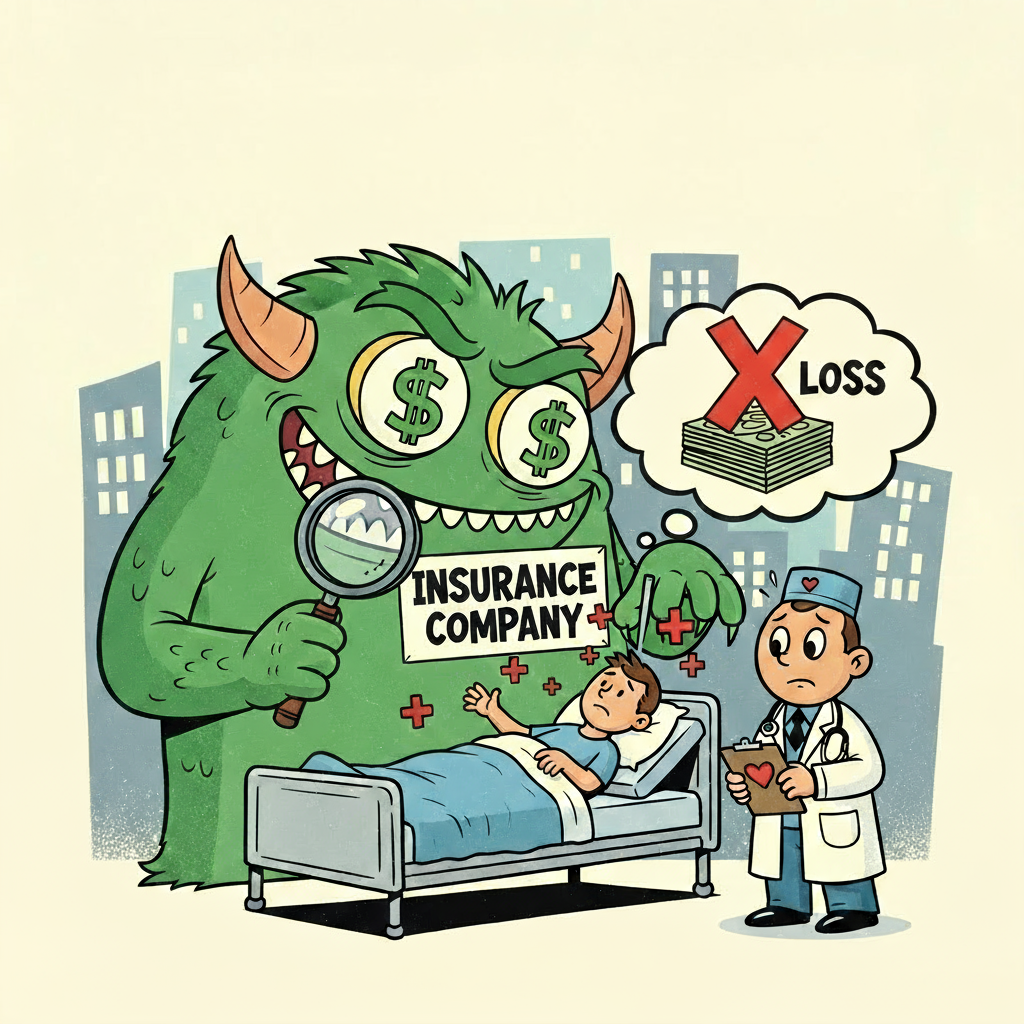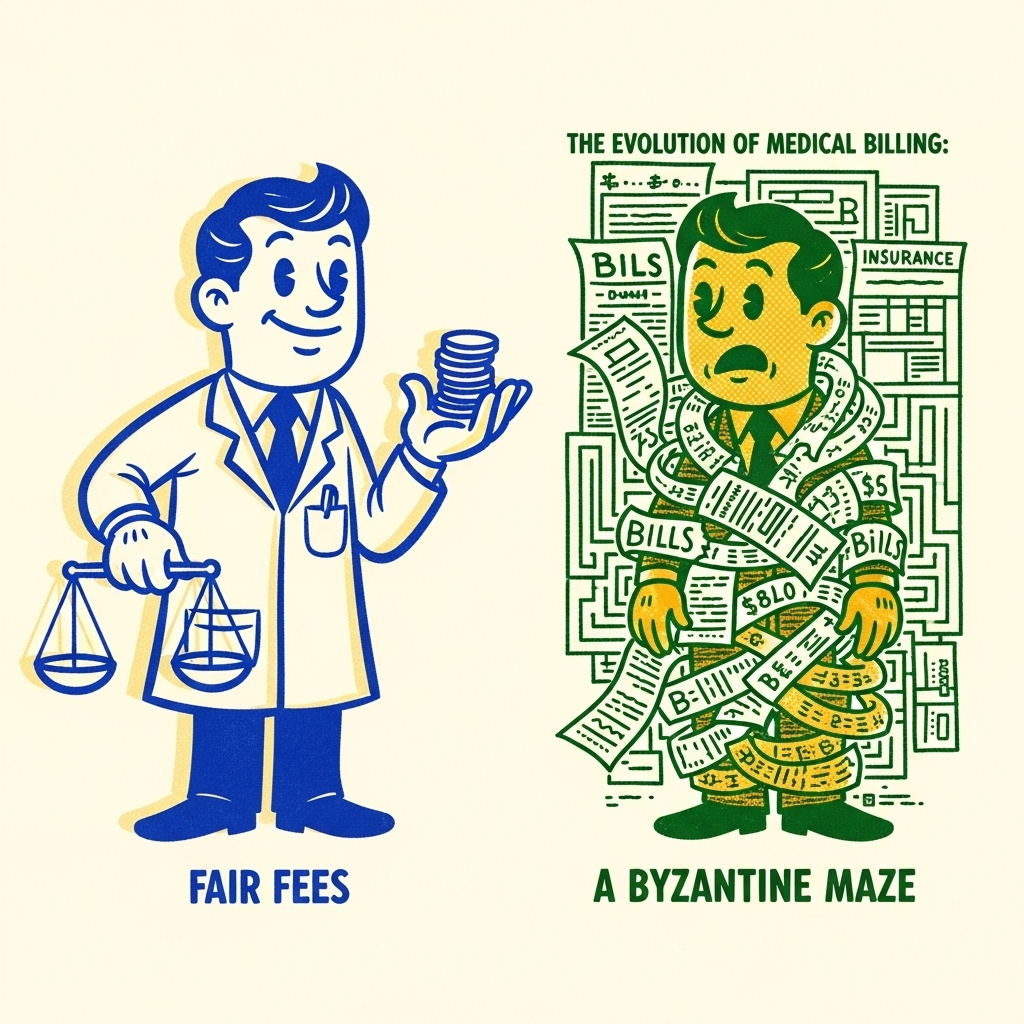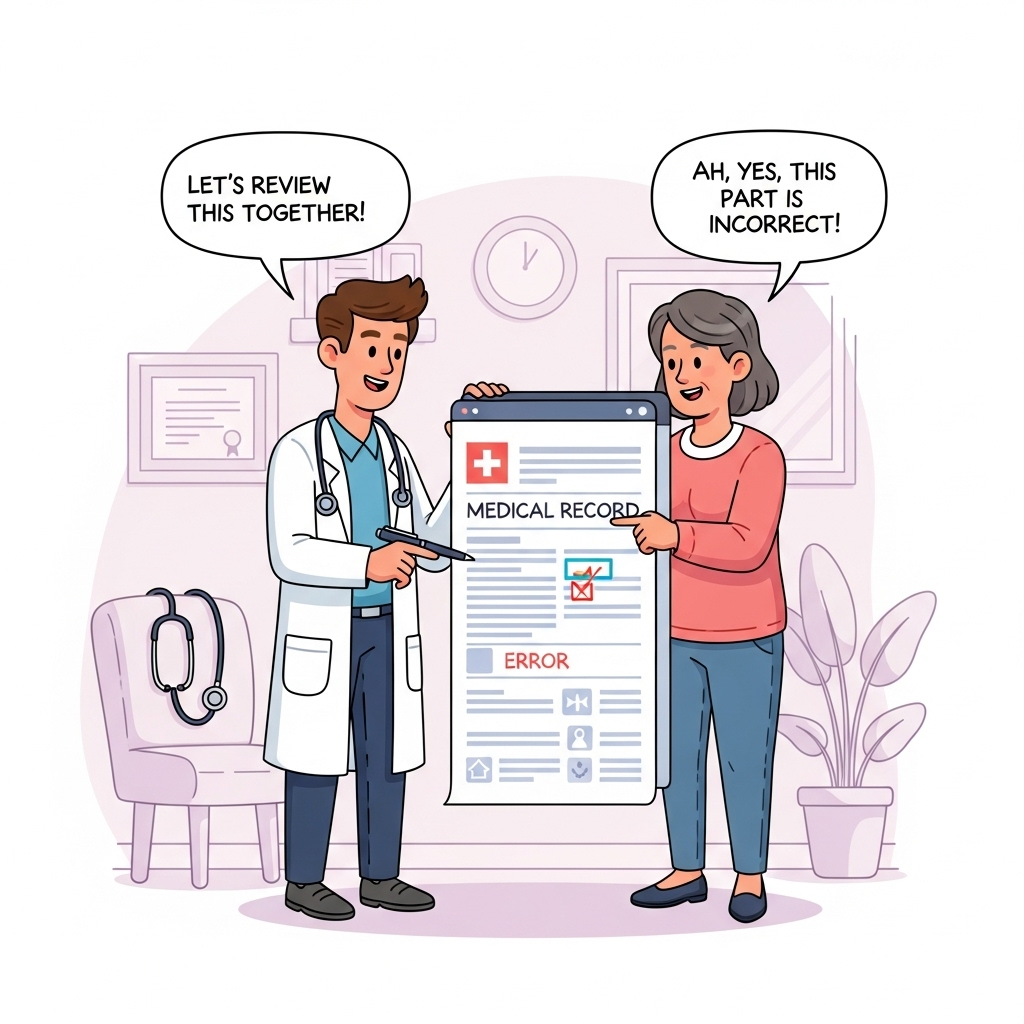
Why Insurance Companies See Your Care as a ‘Loss’
Doug Jorgensen
March 1, 2025
Introduction: The Upside-Down Incentive
Most people assume their health insurer wants them to get the care they need. After all, that’s what they pay premiums for, right?
The reality is more complicated—and more unsettling.
In the insurance business model, every dollar spent on your medical care is a loss on their balance sheet.
That’s not a moral judgment—it’s simple accounting. But it has profound consequences for how insurers behave.
The Medical Loss Ratio (MLR)
Insurers track a metric called the Medical Loss Ratio, which is the percentage of premium dollars spent on healthcare claims.
For example:
- If they collect $100 in premiums and spend $80 on claims, the MLR is 80%.
- The remaining $20 goes to administrative costs, reserves, and profit.
Under the Affordable Care Act:
- Large group plans must maintain an MLR of at least 85%.
- Individual and small group plans must maintain 80%.
While these rules limit how low the MLR can go, they don’t change the fact that reducing claim costs improves profit margins.
How This Shapes Behavior
If an insurer can:
- Deny a claim
- Delay approval
- Require cheaper alternatives
…they improve their financial position.
The less they spend on your care, the better their quarterly earnings look.
Profit vs. Care: The Tension
The problem isn’t that insurers are evil—it’s that their fiduciary duty is to shareholders, not patients.
Even nonprofit insurers operate under similar cost-control incentives.
That means:
- Prior authorizations are partly about cost avoidance.
- Step therapy rules are designed to make patients “fail” cheaper drugs before approving expensive ones.
- Network narrowing keeps you in lower-cost settings, even if they’re not the best fit for your condition.
Real-World Impact
For Patients:
- Denials for medications or imaging that could speed diagnosis
- Fewer options for high-cost specialty care
- Pressure to choose cheaper—but possibly less effective—treatments
For Providers:
- Extra administrative work to justify every decision
- Frustration when evidence-based care is blocked for non-medical reasons
- Financial strain from delayed or reduced reimbursement
The Psychology of the “Loss”
In most industries, spending money to deliver the promised product is part of the business.
But in insurance, the product is risk management—and the less the insurer spends on actual claims, the more financially successful they appear.
When care is seen as a loss, the system naturally evolves to minimize that loss—sometimes at the expense of patient outcomes.
What Can Be Done
- Policy Reform
- Stricter rules on claim denials
- Faster timelines for prior authorization decisions
- Greater transparency in MLR reporting
- Stricter rules on claim denials
- Provider Advocacy
- Document medical necessity with clear, guideline-supported reasoning
- Escalate denials to peer-to-peer reviews
- Involve patients in appeals
- Document medical necessity with clear, guideline-supported reasoning
- Patient Education
- Encourage patients to ask insurers directly about MLR and coverage decisions
- Teach them how to file complaints with state insurance boards
- Encourage patients to ask insurers directly about MLR and coverage decisions
Final Thoughts: Understanding the Game
If you understand that your care is counted as a loss, you start to see why the system behaves the way it does.
It’s not personal—it’s structural. And until that structure changes, providers and patients will have to fight for every dollar of coverage.
Knowing the rules doesn’t make the game fair—but it does make you a better player.
About the Author
Douglas J. Jorgensen, DO, CPC, FAAO, FACOFP
Dr. Doug is a physician, consultant, and national educator on healthcare policy and regulatory compliance. He teaches providers and patients how to navigate a system where financial incentives don’t always align with medical needs.


